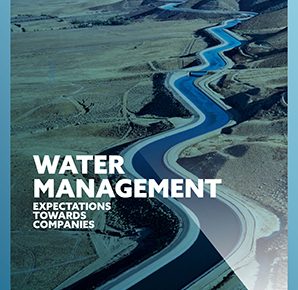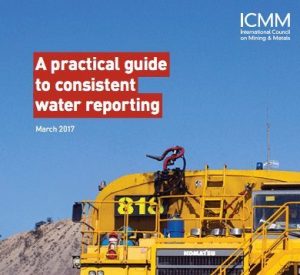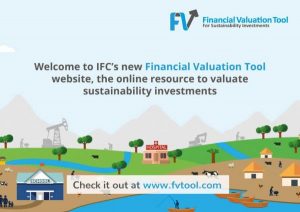Primary Functions
- Understand water use/needs of operations in relation to local externalities to make informed decisions
- Perform a first-level screening through maps or charts capturing key water performance and risk indicators of water consumption, efficiency and intensity
Detailed Description
The Global Water Tool (GWT) is a free, publicly available resource for identifying corporate water risks and opportunities which provides easy access to and analysis of critical data. It includes a workbook (data input, inventory by site, key reporting indicators, metrics calculations), a mapping function to plot sites with datasets, and Google Earth interface for spatial viewing.
By comparing your sites with the best available water, sanitation, population and biodiversity information on a country and watershed basis, including sub-basin data, the tool allows to answer the following questions:
- How many of your sites are in extremely water-scarce areas? Which sites are at greatest risk? How that will change in the future?
- How much of your total production is generated from your most at risk sites?
- How many of your employees live in countries that lack access to improved water and sanitation?
- How many of your suppliers are in water scarce areas now and will be in 2025?
Support to companies operating in multiple countries to start the journey of water management …
Users can quickly map their locations and water use data against water, sanitation, population and biodiversity datasets and stress indicators on a country and watershed basis, with future outlook, and in turn assess risks related to their global operations, supply chains, new projects and prioritize action.
Key benefits:
- Understand water use/needs of operations in relation to local externalities (including staff presence, industrial use and supply chain, water consumption and efficiency) to make informed decisions
- Perform a first level screening through maps or charts capturing key water performance and risk indicators of water consumption, efficiency and intensity. These metrics can then be used for communication with internal and external stakeholders and reporting under corporate disclosure initiatives like the Global Reporting Initiative, CDP Water, Bloomberg and Dow Jones Sustainability Index.
… and an input to a long-term water management strategy for minimizing risk and building long-term resilience
Understanding needs and potential water availability and quality risks at a global level is a first and essential step towards sustainable water management, but the GWT does not provide specific guidance on local situations.
- The global analysis supported by the tool can guide a deeper understanding of local communities’ water situations, and help prioritize actions for high risk sites with detailed response plans elaborated at local/site level.
- The tool can be used in combination with other tools to support decision-making such as a company’s internal environmental data tracking tool, and is compatible with GEMI’s Local Water ToolTM to build water management plans at a specific site or operation.
A robust strategy for minimizing risk and building long-term resilience will take into account community engagement, supply chain and watershed management, transparency and public policy.
- A comprehensive corporate water management strategy and holistic water stewardship approaches can also follow the global analysis, enabling effective communication/ reporting and dialogue with both internal and external stakeholders (including for instance the development of internal policy and guidelines, the education of supply chain partners, with consistent metrics and terminology).
- Also, water risks should not be managed in isolation from other impacts and related trade-offs, including land use, energy consumption, and greenhouse gas emissions.
The GWT encourages all stakeholders to take action, whether at global, national, watershed or site level to support sustainable water management by all.





